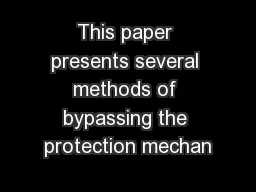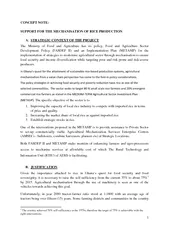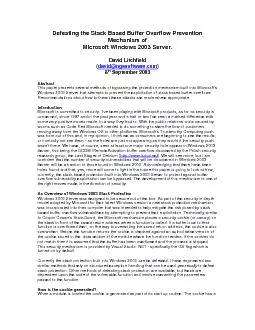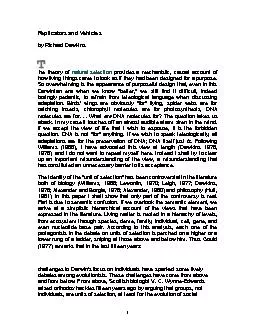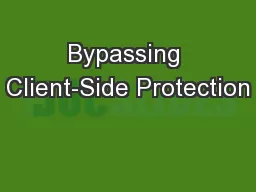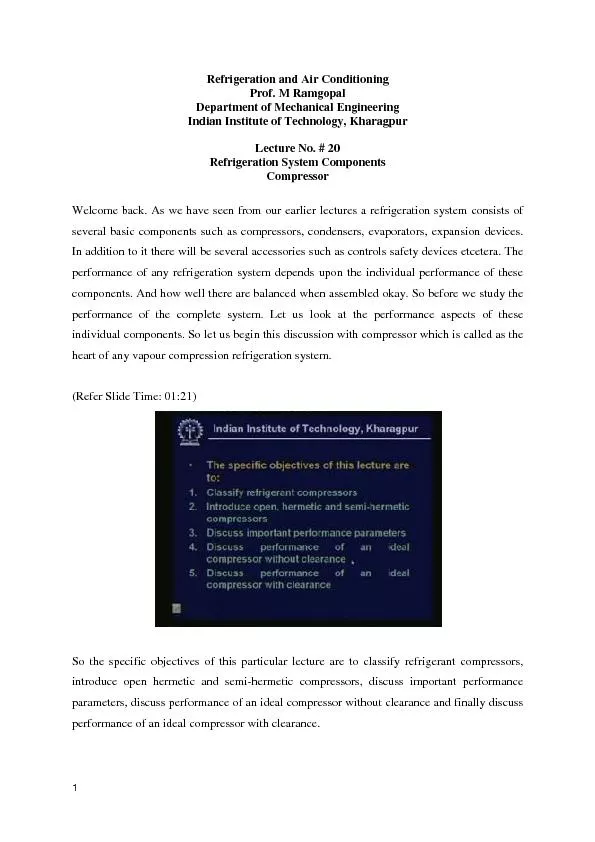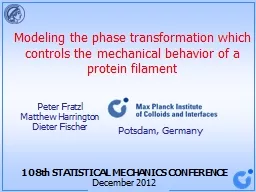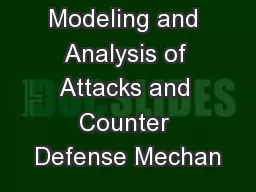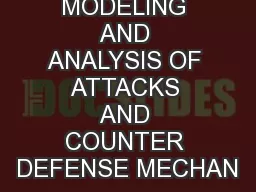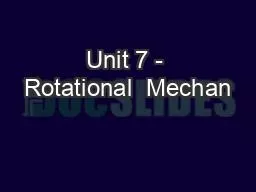PDF-This paper presents several methods of bypassing the protection mechan
Author : min-jolicoeur | Published Date : 2016-07-04
Abstract Introduction Microsoft is committed to security Ive been playing with Microsoft products as far as security is httpwwwlsdplnet will be discovered in Windows
Presentation Embed Code
Download Presentation
Download Presentation The PPT/PDF document "This paper presents several methods of b..." is the property of its rightful owner. Permission is granted to download and print the materials on this website for personal, non-commercial use only, and to display it on your personal computer provided you do not modify the materials and that you retain all copyright notices contained in the materials. By downloading content from our website, you accept the terms of this agreement.
This paper presents several methods of bypassing the protection mechan: Transcript
Download Rules Of Document
"This paper presents several methods of bypassing the protection mechan"The content belongs to its owner. You may download and print it for personal use, without modification, and keep all copyright notices. By downloading, you agree to these terms.
Related Documents

